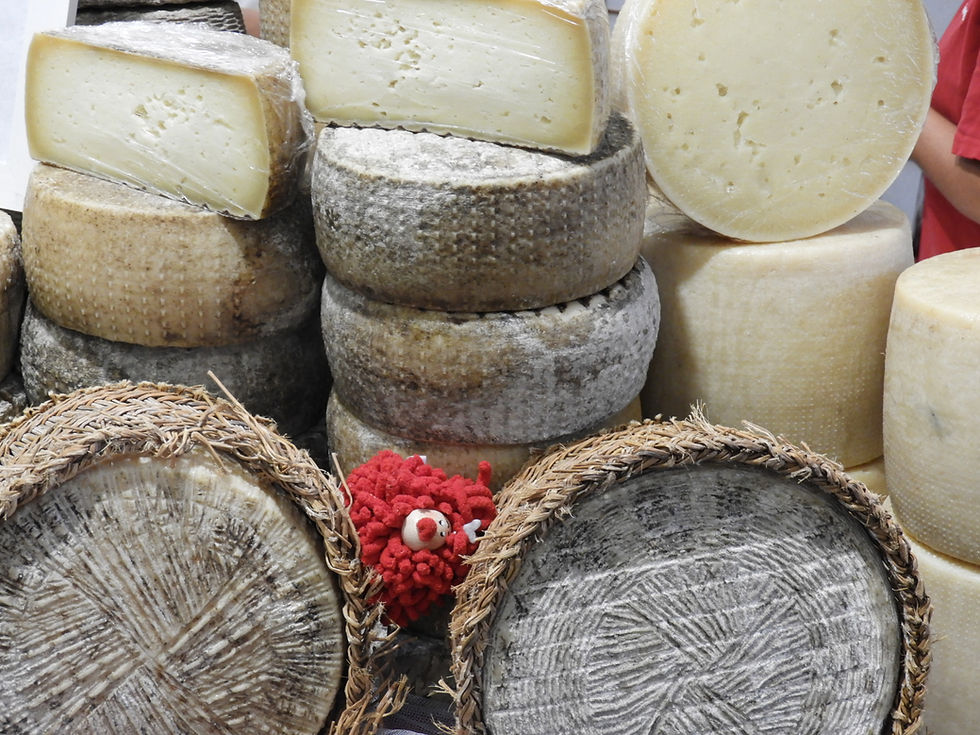Lazio
- Aug 26
- 3 min read
The Heart of Italy
Rome and Its Surrounds
When most people think of travelling to Italy, Rome is often the first city that comes to mind. No matter how many times one visits, there is always something new to discover in and around Rome. Everyone who has spent time in Rome has their own unique stories and experiences to share. Even if you are simply transiting through Rome on your way to another region, the city and its surroundings offer plenty to explore. One particularly enjoyable area to stay is near the airport in the Fiumicino region, where the river meets the sea. Here, the local fishing fleet brings in their daily catch, supporting around 30 to 40 seafood restaurants along the canal. Visitors will also find a selection of charming B&Bs, making it an ideal spot to rest before venturing further into the Italian countryside.

Geography and Provinces
Lazio is located in the western-central part of Italy, covering a total area of 17,208 square kilometres and home to a population of 5.6 million. The region is surrounded by Tuscany, Umbria, and Marche to the north; Abruzzo and Molise to the east; Campania to the south; and the Tyrrhenian Sea to the west. Rome, the capital city of Italy, also serves as the capital of Lazio. Lazio is notable for being home to the Vatican, the centre of the Roman Catholic Church. The provinces within Lazio include Frosinone, Latina, Rieti, Roma, and Viterbo.
Economic Development
Historically, Lazio was a poor region, but significant investments have taken place since it became part of unified Italy in 1870. Today, in addition to its thriving tourism industry, Lazio’s economy benefits from agriculture, wine production, manufacturing, textiles, pharmaceuticals, and publishing. The region is also recognised as the hub of the Italian film industry.
Landscapes and Natural Features
To the east, Lazio is characterised by the Central Apennine Mountain ranges, with the highest point being Mount Terminillo at 2,216 metres. The western coastline features mostly low-lying land, with long sandy beaches interrupted by the headlands of Circeo and Gaeta. The Pontine Islands, situated to the south, are also a part of Lazio. Several lakes formed from ancient volcanoes can be found in the region: Bolsena, Vico, and Bracciano to the northwest of Rome, and Albano and Nemi to the southeast.

The Locavore of Lazio
For many visitors, their first taste of Lazio’s cuisine is in Rome, but the region’s culinary traditions are rooted in pastoral products from the shepherds. Lamb is the primary meat, with nearly every part of the animal being used, and pecorino—sheep’s milk cheese—is preferred over cow’s milk varieties. Rome’s large Jewish community has made significant contributions to the local cuisine, especially in the regional osterie, with dishes featuring fish and locally grown vegetables. The Slow Food movement is strong in and around Rome, emphasising fresh, local ingredients. Key pasta types from Lazio include Bucatini, Fettucine, Gnocchi alla Romana, Maccaruni ciociara, Sagne, and Tonnarelli. Popular cheeses include Pecorino Romano and the two Slow Food Presidio varieties: Caciofiore della campagna Romana and Marzolina.
Wine Production
Lazio is not renowned for its wines, with most coming from the Castelli Romani region southwest of Rome. The best-known variety is Frascati, one of Italy’s most famous wines. Another notable wine is Est Est Est from Monte Fiascone and the nearby Lago di Bolsena, whose history is a fascinating read. Other grape varieties cultivated in Lazio include Aleatico, Bombino Bianco, Orvieto, Malvasia del Lazio, Grechetto, Castelli Romani, and Frascati di Superiore. Most locals drink wines from other regions.




Comments